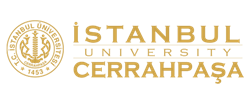Aim: Investigating effects of Incentive Spirometry and Continuous Positive Airway Pressure (CPAP) masks on postoperative pulmonary complications in patients who were undergone thoracicsurgery. Material and Methods: The study enrolled totally 30 patients, including 14 female and 16 male patients, who were hemodynamically stable following thoracic surgery. Following the extubation, patients were randomly divided into two groups. “Incentive Spirometry” studies were performed with group 1, while “CPAP” studies were performed with group 2. For all cases, arterial blood gases analysis, respiratory functions tests and pulmonary X-ray examinations were performed at postoperative first and ninth days. Results: Following the onset of study, no difference could be found in arterial blood gases results performed at post-operative first and ninth days (p>0.05). In both groups, statistically significant decrease in Forced Vital Capacity (FVC), Forced Expiratory Volume in one second (FEV1) and Forced Expiratory Flow (FEF %25-75) values measured at post-operative ninth days was found in comparison with pre-operative measurement values (p<0.001). However, pulmonary function tests were compared postoperative first the ninth days and significant improvements in both groups began ninth day (p<0.001). It was observed that the improvement found in all parameters of respiratory function tests did not have statistically significant differences (p>0.05). In the pulmonary X-ray examination, there was not statistically significant difference between two groups following the therapy (p>0.05). Conclusion: Mechanic physiotherapy techniques are efficient for improving respiratory performance in patients who are undergoing thoracic surgery. Incentive Spirometry and CPAP are not superior to each other on preventing pulmonary complications.


.jpg)


